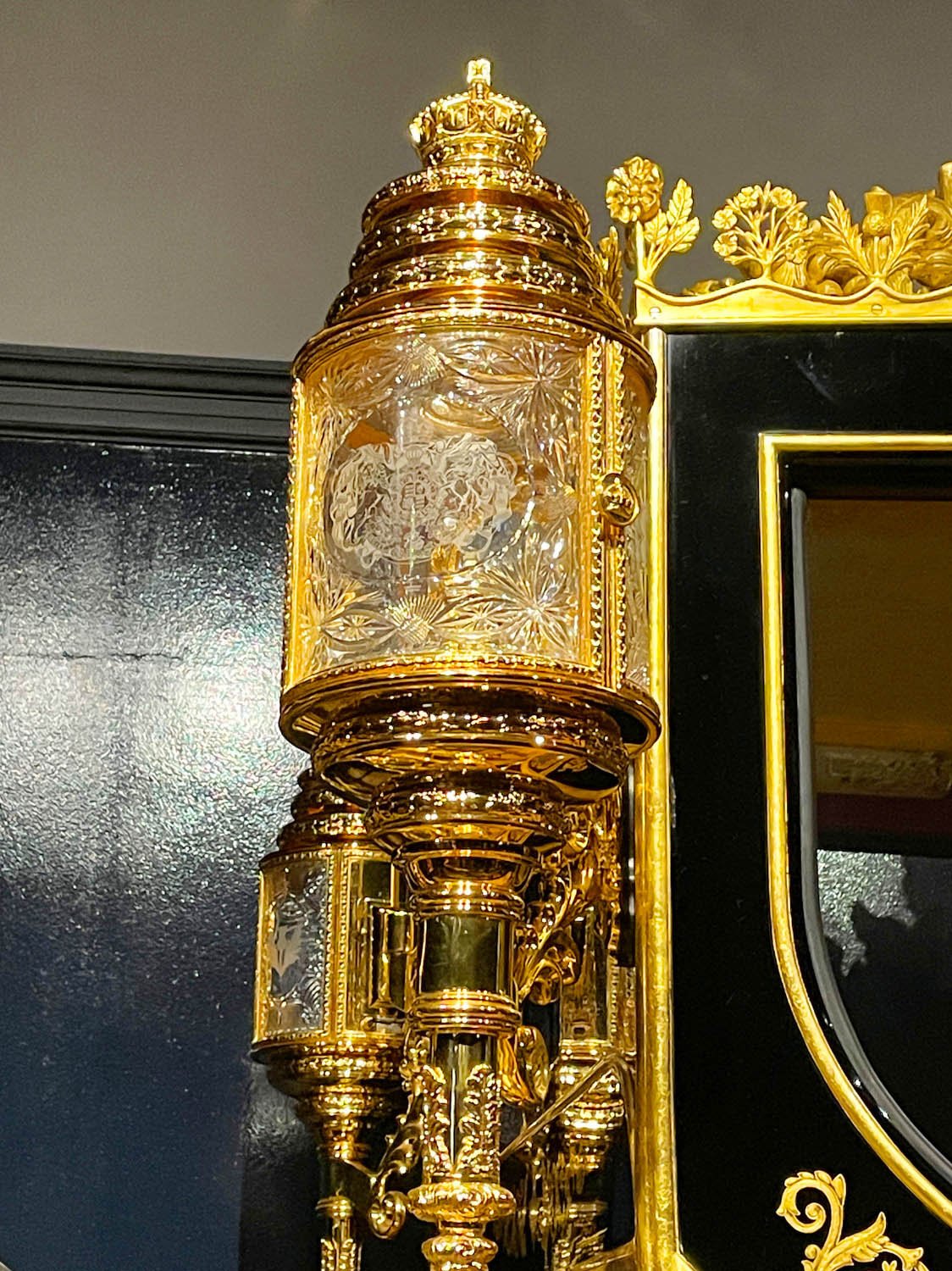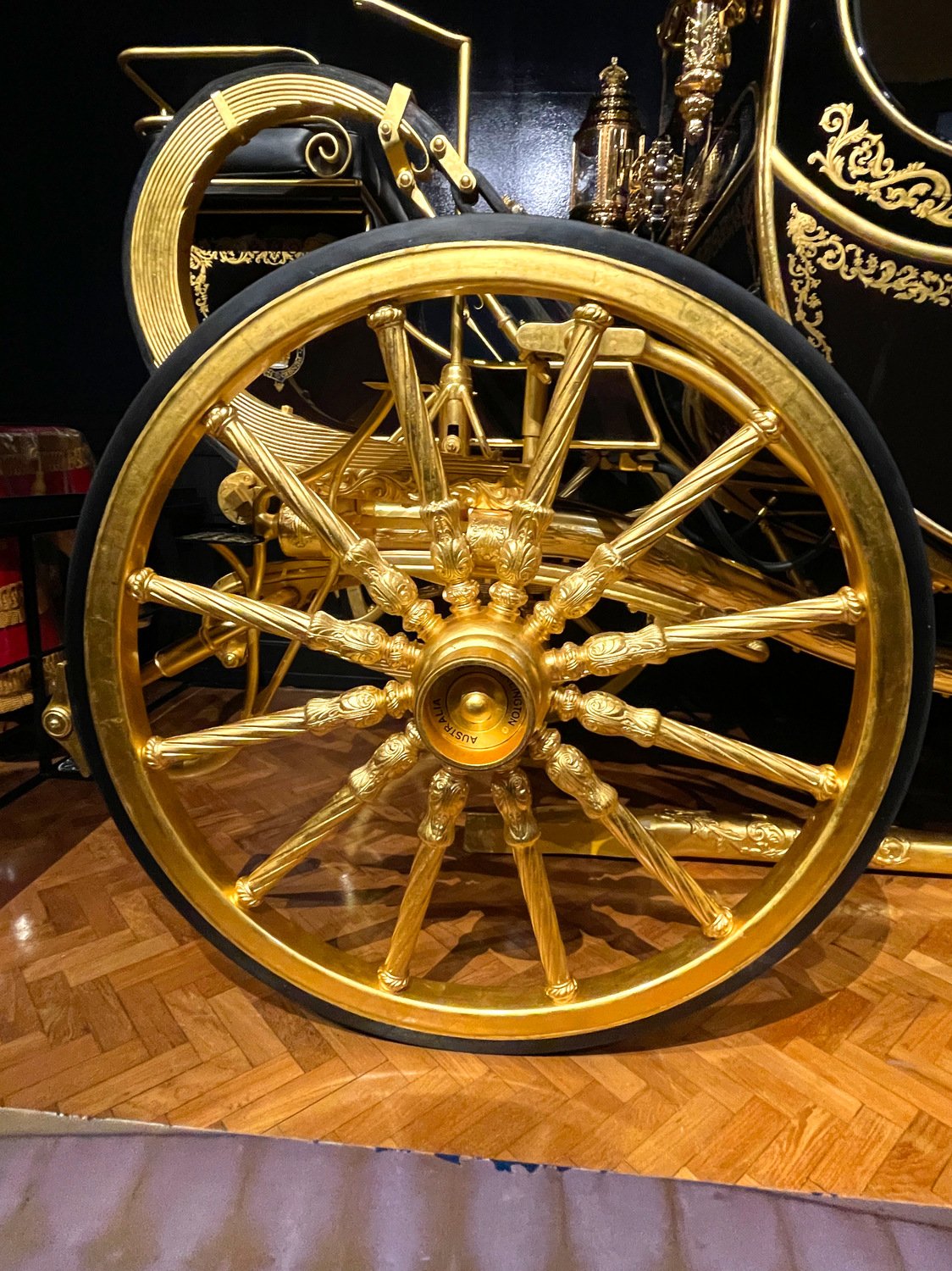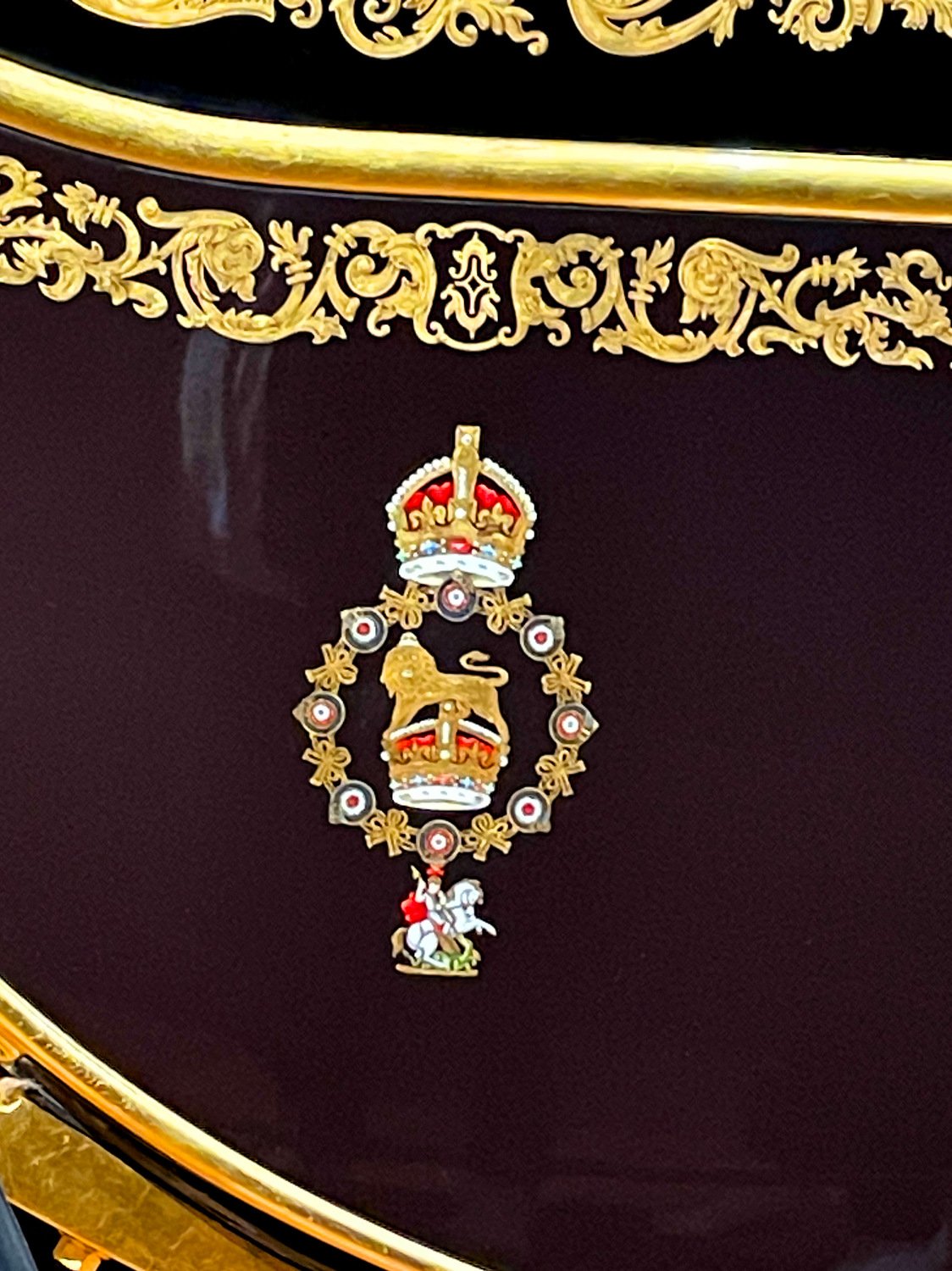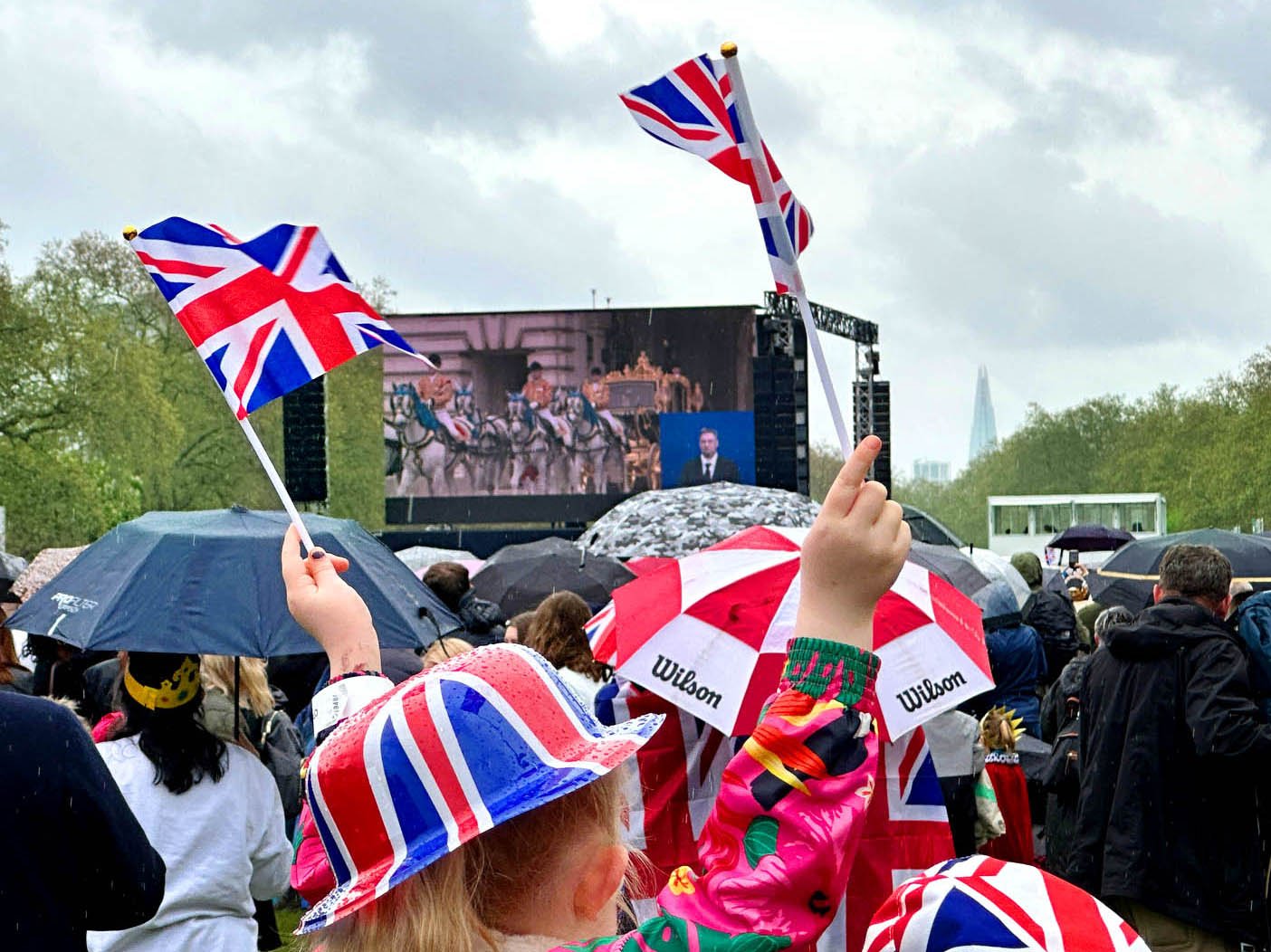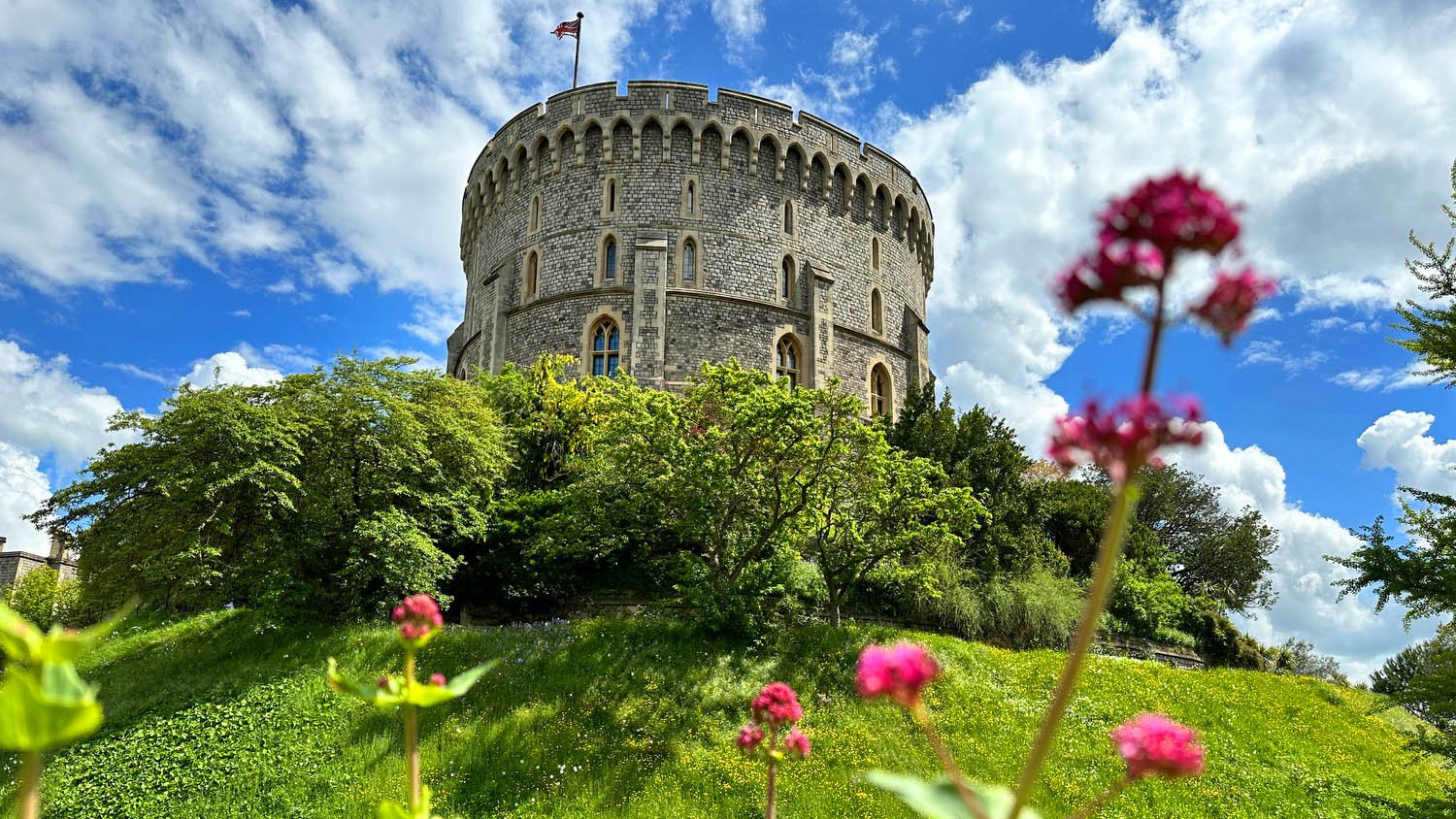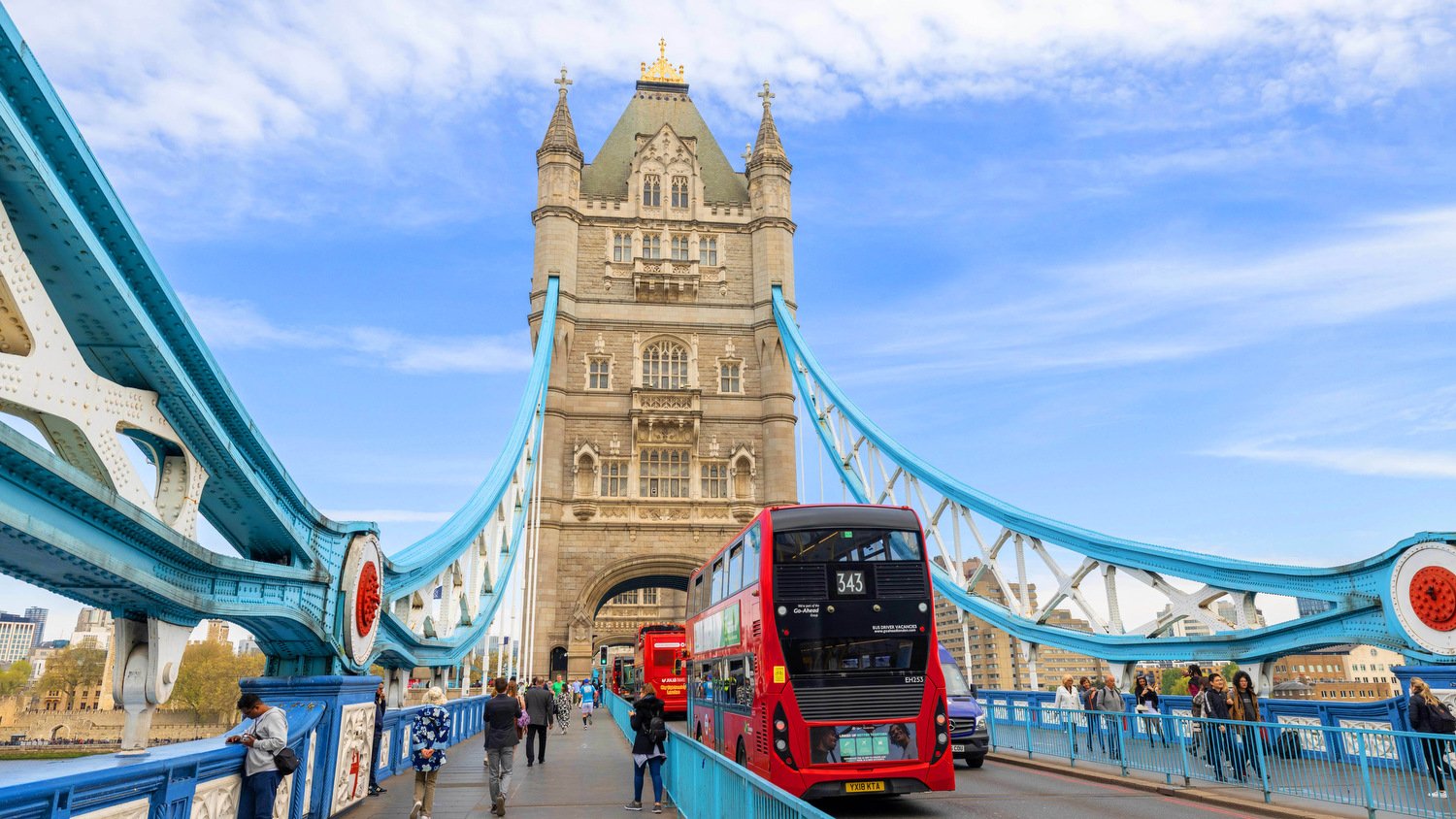Visit the Royal Mews, the working stables of Buckingham Palace
The Gold Coach on display at the Royal Mews in London. All photos by John O’Boyle/The Empty Nest Explorers
Steeped in royal history, and located just a stone’s throw from Buckingham Palace in the heart of Central London, stands the Royal Mews - the working livery stables and ground transportation center for the Palace.
From March through October, you can tour these working stables and get a behind-the-scenes look at what goes into the care and maintenance of the King’s working horses, ceremonial carriages, and vehicles. The star of the show is the iconic 260-year-old Gold State Coach.
The Royal Mews is actually responsible for any and all road travel arrangements for the King and members of the Royal Family, and that means the royal cars as well as horse-drawn carriages. So there is plenty to see!
We loved this relaxed and enjoyable stop; you only need about an hour to do it and it’s so unique. It’s fun to get an up-close look at some of these marvelous coaches and modern vehicles.
And who doesn't love horses?
The Irish Stage Coach on display at the Royal Mews.
Exploring the Royal Mews
The Royal Mews is a little different from other palace experiences. For one thing, it’s primarily outside, which is refreshing! You can just walk around at your own pace and aren’t corralled into a queue or committed to seeing it in any particular order.
Just keep in mind that the Royal Mews is both a working and residential environment for some of the staff, so be respectful.
The word “mews” specifically refers to a group of stables with rooms above, built around a yard. This design is very apparent when you visit the Royal Mews. The upstairs flats around the center court create a contained community in this bustling transportation center serving the Palace. Queen Elizabeth had referred to it as “a small village which belongs to Buckingham Palace”.
And look out for horses! This is a busy, working stable and horses can be barrelling through at any time.
The Royal Mews is a working facility so you’ll see staff going about their business. Some staff members even live in second floor apartments.
Everything you see at the Royal Mews has a story to it, so it was great to see the excellent signage describing each coach on display and what historical events it might have taken part in.
You will definitely want to pick up a free multimedia guide to help you explore the grounds at your leisure.
And, even better, take advantage of the free guided tours that are given at regular intervals during the day. The “wardens” are excellent and knowledgeable tour guides and tell some great stories, (though our poor guide was suffering from pollen overload from the shedding flowering trees around the Mews!)
Our guide also deftly avoided an exuberant school group, taking us along the route in an opposite order to avoid crashing into them, which we and the others in our small 10:15 group appreciated!
Warden guided tours take place daily at 10:15, 11:00, 12:00, 1:00, 2:00, 3:00 and 4:00, and are approximately 45 minutes long.
The meeting point is directly opposite the stables and very clearly marked.
Special family tours are offered on Saturday and Sunday at 11:30 and 1:30.
The Carriage Horses of the Royal Mews
Belfast looking out out from a stall at the Royal Mews.
If you are lucky you will get to see some of the most famous residents of the Mews when you visit the stables – the royal carriage horses. There are only two types of horses used to pull the carriages at the Mews - Windsor Greys and Cleveland Bays.
Windsor Greys draw the carriages in which the monarch, royal family members, and their guests travel. The Greys are not a breed in their own right - the name simply describes gray horses of the Royal Household used for ceremonial and state occasions. The horses used to be kept at Windsor Castle to draw the private carriages of Queen Victoria, and since then have been called the Windsor Greys.
These horses are personally chosen by the Head Coachman for their steady temperament, appearance, size and stamina. They are actually washed everyday to keep their color looking good!
The Cleveland Bays are one of the oldest breeds of English horse and the only English breed used to pull carriages. Their jobs at the Royal Mews include pulling all other carriages, including those carrying high commissioners and ambassadors presenting their credentials to the monarch, and as workhorses for daily activities.
A few fun Horse facts -
The reigning monarch names every horse at the Royal Mews. Queen Elizabeth II particularly enjoyed this. She often chose places she had visited (we got to see “Belfast”) or a name that related to the horse's bloodline, such as the offspring of “Fairytale” that included a horse named “Cinderella”. Each horse has a nameplate on their stall with their name a birth year, so take a look when visiting the stable.
Training the horses is a big part of the duties carried out at the Royal Mews. Leading up to the recent coronation of King Charles, the staff greeted the horses with flags, drums, shouts and cheers on a daily basis to prepare them for the noisy crowds they would face on Coronation Day.
There are about 30 horses stabled at the Royal Mews at any given time.
If you would like to read more about Royal Horses, check out our post Why you should visit Horse Guards Parade on your next trip to London.
The Gold State Coach
The Gold State coach on display at the Royal Mews.
The grand rock star of the Royal Mews is the Gold State Coach. It’s what everyone wants to see.
The Gold State Coach is impressively displayed in its own garage of sorts - a specially adapted stable with daylight pouring in, highlighting its grand appearance. Life-sized models of gray horses and postillion riders show visitors how the coach looks when transporting the monarch for real.
My impression - holy cow, this thing is massive! It is seven meters long and three and a half meters tall. It weighs four tons and requires eight Windsor Greys to draw it. Phew!
I don’t care how jaded you may think you are; there is no way not to be impressed by the sheer bling factor of the Gold State Coach!
The hallway leading to the Gold State Coach
At 260 years old it has been used at every coronation since that of William IV and for other grand state events as well. Most recently in 2023, it was used for the Coronation of King Charles III. As our visit was only a few days after that occasion, I was happy it was back in its “parking garage” and ready to be viewed again by visitors when we got there. Apparently getting its four-ton hulk in and out of there is no easy task.
To say the Gold State Coach is ornately decorated is an understatement. It features magnificently painted panels of Roman gods and goddesses, gilded sculpted figures of cherubs and massive tritons, and each wheel is just gigantic.
I guess when you want to make a kingly impression, go big or go home, right?
Interestingly, the royals themselves don’t fancy riding in Gold State Coach, as it is said to be uncomfortable.
In QEII’s own words, “Horrible.”
The Diamond Jubilee State Coach
So let’s talk about comfort and style! From the oldest to the newest, let’s admire the Diamond Jubilee Coach, which also played a part in King Charles’ Coronation.
Built to celebrate Queen Elizabeth II's Diamond Jubilee in 2012 - and so named for it - the newest coach at the Mews brings a modern take to the traditional horse carriage. And though it may look more understated than the grandiose Gold State Coach, it’s got plenty of bling of its own, combining traditional craftsmanship and modern technology.
The Diamond Jubilee State Coach was built in Australia, has an aluminum body for lightness and utilizes six hydraulic stabilizers to prevent swaying. (Sway is a big issue on these types of carriages; it can make one seasick!) The decorative gilded crown atop the carriage camouflages a camera for point-of-view filming.
Most interestingly, the interior wooden panels of the comfortable, air-conditioned coach are made from objects and materials donated by over 100 historic sites and organizations from across Britain. For example, the seat handrails are from the Royal Yacht Britannia, and included in the interior are a piece of a Battle of Britain Spitfire, a musket ball from the Battle of Waterloo, and digital copies of the Magna Carta. The window frames and paneling contain material from 10 Downing Street, the Tower of London and the Antarctic bases of Captain Scott and Sir Ernest Shackleton, to name only a few.
The comprehensive list of material contributions to the Coach listed on the Royal Collection Trust’s website is astounding! This coach is pretty much a British history monument on wheels. There are just two many thoughtful and elegant details to list in a blog post - you’ll just have to go to see it for yourself!
Other Highlights of the Royal Mews
The Gold State Coach and the Diamond Jubilee Coach are only two of the many historic coaches, landaus, and vehicles garaged at the Royal Mews.
Eight major state coaches, and about twenty smaller landaus and barouches, are kept at the Royal Mews. Not all of them are displayed for the public, but a good number of them can be seen.
The Irish State Coach and the Glass Coach are particular favorites of mine. They always factor into the different historical events I’ve read about. So it’s like looking at a piece of history that is somehow familiar.
The variety of landaus is also interesting, from a tiny Pony Phaeton used by Queen Victoria to buzz around Balmoral in her later years, to the regal Semi-State Landau. The Royal Family uses landaus - “convertible” style coaches that can be used with the top down - when they want the crowds to see them well. Landaus are traditionally seen at Royal Ascot, where everyone is showing off their sartorial finery.
The Royal Mews also houses the collection of motor cars used by the royal family. The most familiar are three Rolls Royces, three Daimlers, and two Bentleys, all painted in familiar royal livery colors of maroon and black.
You can see one of the Bentleys on display and it is gorgeous and impeccably kept. Nice ride!
If you are lucky when you are out and about in London, you may see one of these beauties with the Royal Standard flying on top delivering a royal to their destination. (We did!)
The oldest car in the collection is the 1950 Rolls Royce Phantom IV, the most expensive car ever made by Rolls Royce. It was commissioned by Queen Elizabeth and Prince Phillip shortly after their marriage and was customized to their specific requests. (Phillip was a well known “car guy”.)
The fleet also includes two green Jaguar stretch limousines, used for less formal occasions.
The Royal Riding School - One of the more intriguing highlights of the Royal Mews is the Riding School. It was established by Queen Victoria (the first monarch to live in the redesigned Buckingham Palace) for the children of the working families of the Mews to learn to ride. All of Victoria and Prince Albert's children learned to ride horses in the Riding School at the Mews, as did many royal children to follow. It still exists today and is used for horse training.
Our favorite travel resources
Hotels - Booking.com. Lots of search options and information. Link
Activities - Viator. We love food tours and historical guides from Viator. Link
Airfare - FareDrop. Custom notifications of airfare sales. Link
Phone connection - Airalo. E-Sim for your phone, it’s easy and available for every country. Link
Note - This blog post contains affiliate links. If we recommend a product, activity, or hotel, we might receive a small commission if you buy or book from these links. This is done at no additional cost to you. We only recommend products we have personally used or have thoroughly researched.
The Royal Riding School at the Royal Mews.
The Royal Mews is a great attraction for Kids
There are lots of reasons that make the Royal Mews a particularly good experience with kids.
For one thing, it’s outdoors. And although you should not let your kids run wild (people live here, and also horses can get spooked), it’s definitely relaxed and low key. You can do it at your kids’ pace, seeing as much or as little as they can handle. It’s also not too expensive (family discounts are offered) and you can be done in an hour, which is perfect for children.
Kids should enjoy knowing they are on the Palace grounds and that everything they see here is “real” and part of the functioning life of the royal family.
You can try on uniforms at the Royal Mews
And of course there is all of the “fun stuff” to see. Along with all the carriages and horses, kids can enjoy visiting the State Stables to see some of the older vehicles and carts on display. Then they can try on real royal livery, tack a wood pony, or pose for photos in a replica of a royal landau. Well, you don’t have to be a kid to pose in the landau. Just sayin. ;)
There is a family version of the multimedia guide as well, which gives you lots of family friendly information about the horses and the carriages, along with some fun challenges to complete.
For 2024, on selected Fridays in April, June & July, families can enjoy different arts and crafts workshops in the Livery Room, inspired by the amazing horses and carriages at the Royal Mews. These activities are free with standard admission. You can also convert your ticket to a 1-Year Pass during your first visit so you can enjoy free re-admission to attend further activity days.
These workshops are suitable for families of all ages and sizes.
And of course there is a gift shop, with horse & carriage themed toys, books and trinkets for a souvenir of the day. (Or maybe you don’t want them to know about that!)
Debbie sits in a replica carriage.
Planning your trip to the Royal Mews
Getting Royal Mews Tickets
Tickets can be purchased ahead from the Royal Collection Trust website. They can also be purchased at the gate, but as always with popular attractions, it is best to book ahead if you can.
Adult tickets are £17.00;
Young people (18-24) are £11.00; Children (5-17) are £8.50; Children under 5 are free.
Opening times - In 2024, the Royal Mews is open to the public from 1 March - 3 November
10am to 5pm, with last admission at 4pm.
The Royal Mews is closed on Tuesdays and Wednesdays, except from 11 July to 31 August when it is open 7 days a week.
Because it is a working transportation center, it can be closed on short notice due to events.
Getting to the Royal Mews
The Royal Mews is on Buckingham Palace Road, central London, on the grounds of Buckingham Palace. It is directly opposite Buckingham Palace garden.
If you know where Buckingham Palace is, you can get to the Royal Mews. If you are facing the Victoria Memorial in front of the palace, go to your left and follow the wall around till you see the sign.
By Underground - The closest Tube station to the Royal Mews is Victoria (Victoria, and Circle and District lines), which is a seven-minute walk away.
You could also use St James's Park (Circle and District lines); Hyde Park Corner (Piccadilly line); or Green Park (Victoria line); These stations are 10-15 minute walks to the Royal Mews.
By Bus - Bus numbers 11, 211, C1 and C10 stop on Buckingham Palace Road. Victoria Coach Station is a 10-minute walk from the Palace.
For further information visit the Transport for London website.
John and Debbie at the the Gold State Coach
A few last thoughts on visiting the Royal Mews
No food is permitted on the grounds of the Royal Mews. (But you are only there an hour; so I think most folks will be ok!)
And remember, no selfie sticks around the horses - duh!
Since it is so centrally located and it doesn’t take too long to see, the Royal Mews is an easy and very enjoyable add-on to a visit to Buckingham Palace. Or you can easily work it into a day when you've come to see the Changing of the Guard, or even just to walk in one of the nearby Royal Parks.
A uniquely London experience. ;)
This post was researched and written by Debbie of the Empty Nest Explorers. You can learn more about the Empty Nest Explorers here.







